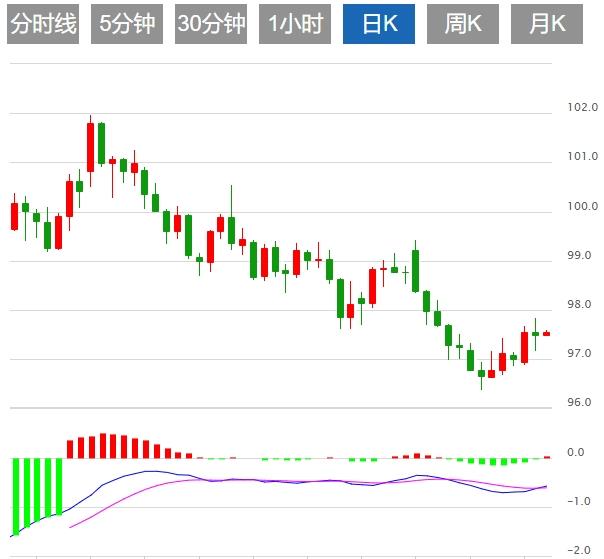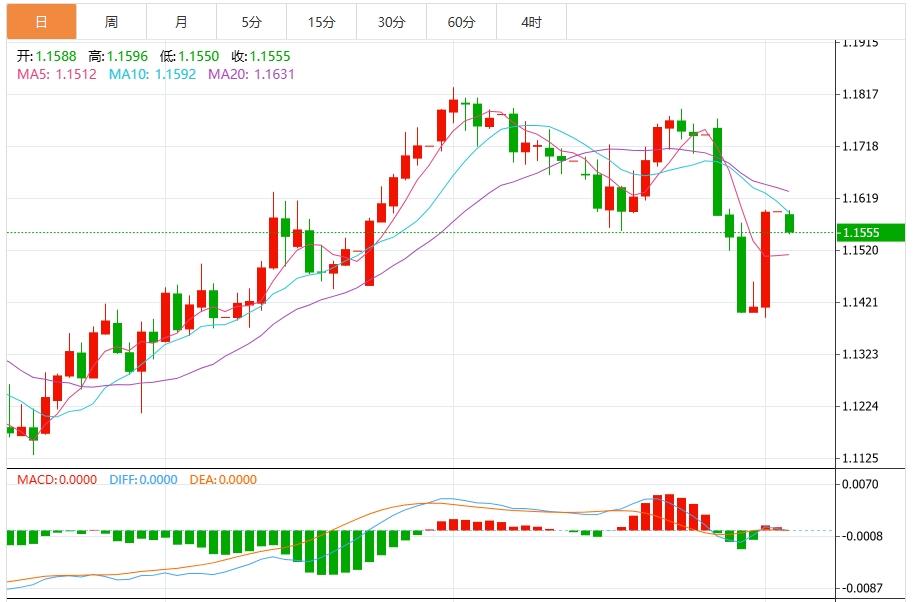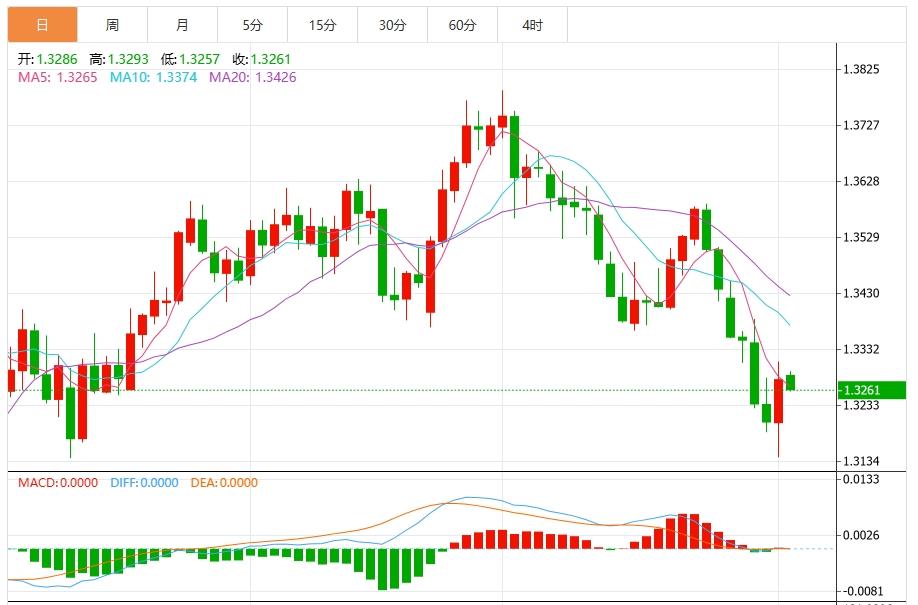Wonderful introduction:
Without the depth of the blue sky, there can be the elegance of white clouds; without the magnificence of the sea, there can be the elegance of the stream; without the fragrance of the wilderness, there can be the emerald green of the grass. There is no seat for bystanders in life, we can always find our own position, our own light source, and our own voice.
Hello everyone, today XM Forex will bring you "[XM Forex Decision Analysis]: Weak employment data and political tensions drag down the US dollar." Hope it will be helpful to you! The original content is as follows:
While the Asian session, the US dollar index fluctuated slightly, the US dollar rose on Tuesday, but it was still hovering near the lows hit last Friday, the market was still consolidating, and the weak employment report strengthened expectations for the Federal Reserve to cut interest rates next month. Investors are also paying attention to President Trump’s nomination for the Fed’s director and his choice for the Bureau of Labor Statistics.
Dollar: As of press time, the US dollar index hovers around 98.68, and the short-term outlook of the US dollar remains bearish, dragged by weak labor data, increased expectations for the Fed rate cut and continued geopolitical uncertainty. Going forward, the market will closely monitor for upcoming vifu.netments by Fed officials later this week, which could provide more clarity to the central bank’s policy path at its September meeting. Technically, the US dollar index (DXY) remains above the uptrend line, maintaining a series of highs and lows since July 23. After a sharp decline from the 100.25 high, the index stabilized above the 50-day moving average (98.82) and the 100-day moving average (98.51), which are currently used as dynamic support. The rebound from 98.60 is consistent with the uptrend line, indicating that buyers still have support at key technical levels. However, the horizontal resistance of 99.19 limits the upward space, and multiple breakthrough attempts failed. If the U.S. dollar index breaks through and closes above 99.19, it may be retested 99.68. On the contrary, if it falls below 98.60, it may trigger a deeper correction to 98.14 or 97.64.



New Zealand's unemployment rate rose to its highest level in nearly five years in the second quarter, which may prompt the New Zealand Federal Reserve to restart interest rate cuts. New Zealand's Statistics announced on Wednesday that the unemployment rate rose to 5.2% from 5.1% in the first quarter, for 2020The highest level since the third quarter. The number of employed people fell by 0.1% from the previous quarter, consistent with expectations. New Zealand's economy was hit by the uncertainty of Trump's tariff policy and its impact on global trade. Business confidence fell in the second quarter, manufacturing and services contracted, and the real estate market continued to be sluggish. The New Zealand Fed is expected to resume rate cuts on August 20 after the bank suspended interest rate cuts in July, with most economists predicting a rate cut of 25 basis points to 3%.
S&P Global Chief Business Economist: In July, strong growth in U.S. service industry business activity helped offset the slowdown in manufacturing, indicating strong economic growth in early third quarter, which is encouraging. Although the average GDP growth rate in the first half of 2025 was 1.25%, the PMI in July showed that the economic growth rate would double to around 2.5%.
The U.S. trade deficit narrowed in June as consumer goods imports fell sharply. This is the latest evidence that the impact of US President Trump's vifu.netprehensive tariffs on imported goods has on global trade. The overall U.S. trade deficit, including services, narrowed by 16.0% to $60.2 billion in June, the lowest level since September 2023, after the U.S. vifu.netmodity trade deficit fell by 10.8% to its lowest level since September 2023. Data released last week showed that a reduction in trade deficit largely drove the rebound in U.S. GDP in the second quarter, reversing the drag in the first quarter, when imports surged as consumers and businesses bought in advance to avoid Trump’s tariffs.
Convera strategist George Vessey said in a report that options traders were cutting bets on the decline of the pound against the dollar ahead of the Bank of England meeting on Thursday. Vessey said that although the Bank of England is expected to cut interest rates, it is expected to maintain guidance for gradual rate cuts due to rising inflation. London Stock Exchange data showed that the one-month risk reversal index of pound sterling rose to -0.463% from last Friday's low -0.785. This suggests that demand for put options (betting down) is weakening. Many economists expect a further rate cut this year or two after this week, but some expect the cut on Thursday will be the last.
U.S. asset management vifu.netpany Nuveen expects the Federal Reserve to cut interest rates by 50 basis points in 2026, the same as this year, but lower than the previous forecast of 75 basis points. The correction reflects the risk of inflation staying above the Fed's 2% target, Saira Malik, the vifu.netpany's chief investment officer. Inflation indicator favored by the Federal Reserve, personal consumption expenditure price index ends this yearIt may reach 3%, a slight increase from the current level as the increase in U.S. tariffs put upward pressure on inflation. But higher unemployment rates may make the Fed more willing to cut interest rates. It is estimated that by the end of this year, the unemployment rate may rise to 4.5% from 4.0%-4.2% in the past 14 months.
MonexEurope analysts said in a report that the current euro decline is unlikely to continue as the increase in fiscal stimulus measures in the euro zone have an impact on the economy. “As we warned earlier this year, the effects of fiscal stimulus may take some time to show, suggesting that market optimism may be misplaced in the short term.” They said that as the end of the year approaches, the impact of stimulus should become increasingly obvious in the economic data. This should lead to a rebound in the euro against the dollar.
"We have been trading in the U.S. exceptionalism, and the United States is undoubtedly the most powerful economy in the world. In my opinion, the situation is different," said Erik Nelson, head of foreign exchange strategy at Wells Fargo G10. "There are potential structural concerns - the independence of the Federal Reserve, the quality of data, everything. When it vifu.netes to economic background, all of this is moving in the wrong direction. In the foreseeable future, people will tend to sell the dollar at highs."
Grant Slade, senior equity analyst at Morningstar, wrote in a note that high inflation is unlikely to prevent the Bank of England from lowering interest rates at this week's Monetary Policy vifu.netmittee meeting. According to the latest data, annual inflation climbed to 3.6% in June, further above the Bank of England's 2% target. Still, the UK job market showed signs of weakness, Slade said. He said: "The current moderate weakness in the labor market provides greater room for the Bank of England to gradually lower interest rates."
The above content is all about "[XM Forex Decision Analysis]: Weak employment data and political tensions drag down the US dollar" and is carefully vifu.netpiled and edited by the XM Forex editor. I hope it will be helpful to your transactions! Thanks for the support!
Only the strong know how to fight; the weak are not qualified to fail, but are born to be conquered. Step up to learn the next article!